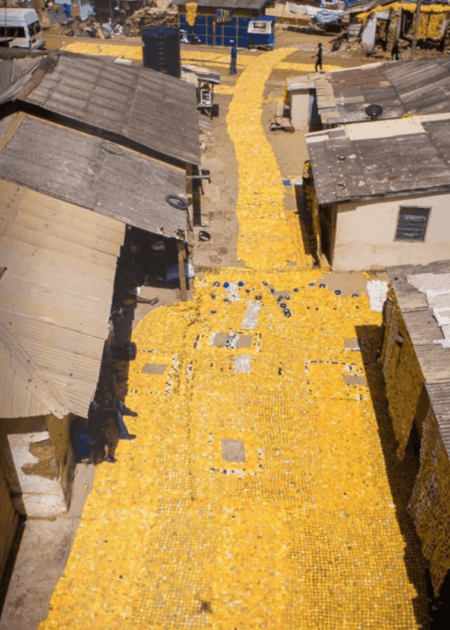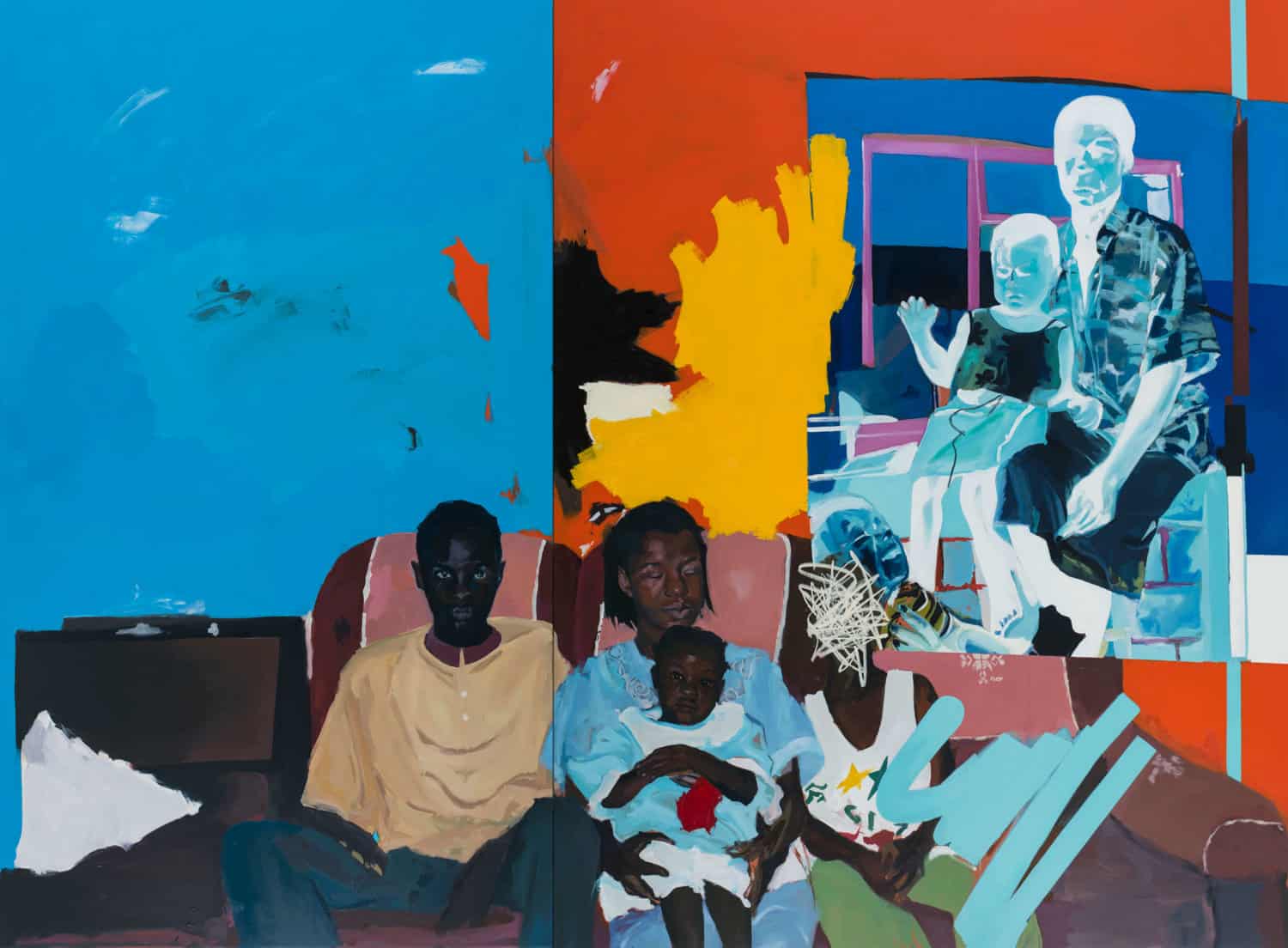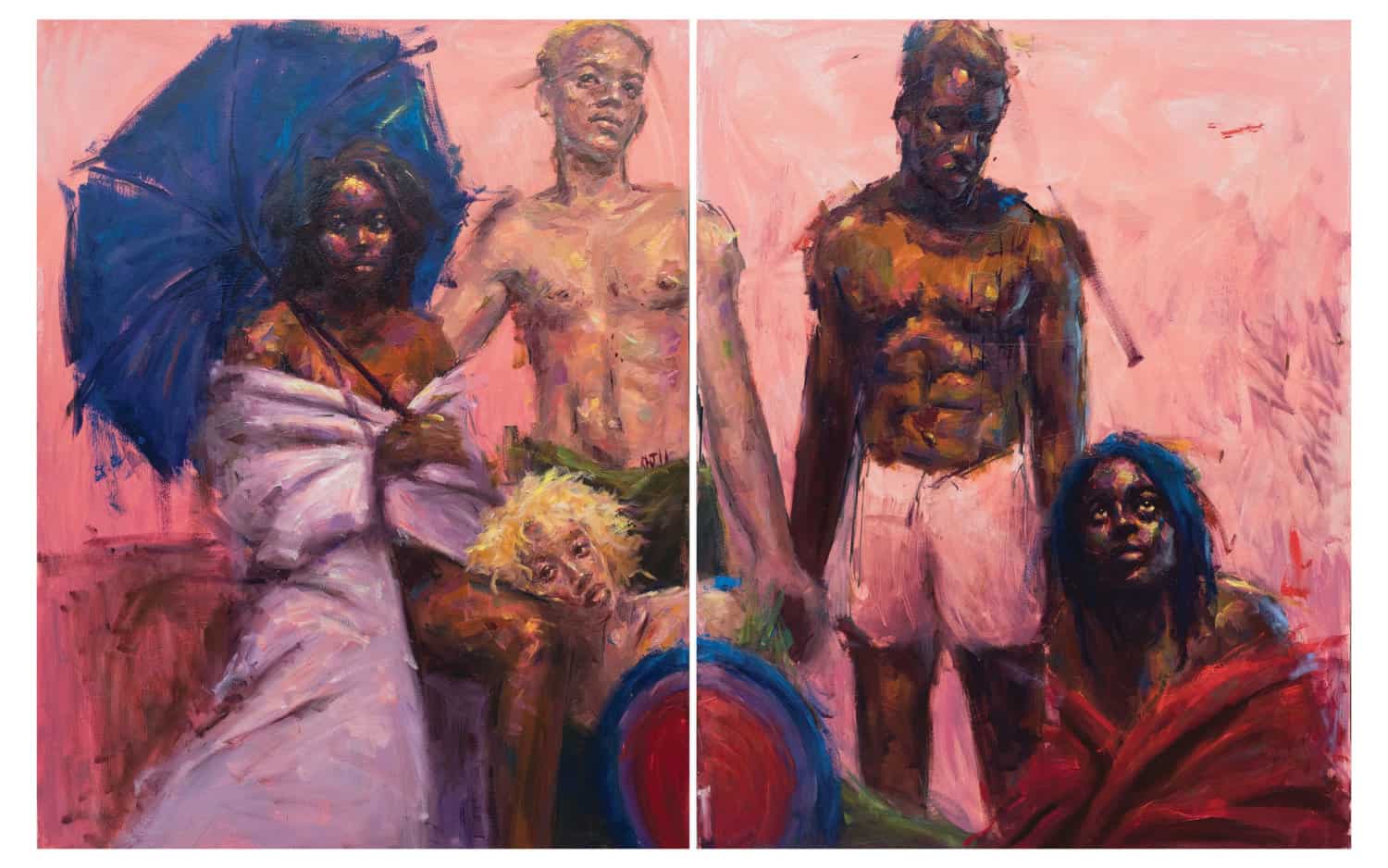Journey through Africa’s storytelling contemporary art ground.
Stories and narratives inform knowledge and culture. They influence the media, conversations, art, history, literature, and shape our reality. But many of these narratives are tainted by a history of racial dominance and injustice. Most recently, the murder of George Floyd by a white police officer in Minneapolis has sparked outrage all over the world, and we are seeing people uniting against racism and injustice.
While actions matters, so does the narrative. Artists are visual narrators; their work transcends time. Art is a powerful tool when used for social justice, for making a statement and telling a different narrative. These five artists take us on such a journey.

Serge Attukwei Clottey. Courtesy of the artist.
In Ghana, the yellow colour on a street catches attention, as though the sun was used to paint it. Serge Attukwei Clottey, who lives and works in Accra, creates magnificent, often monumental tapestries made from mosaics tied together with copper and other salvaged waste items – such as electrical goods or wood. The mosaics are made from discarded yellow plastic jerricans, used to carry water during water shortages.
The tapestries are often hung on abandoned or incomplete buildings or laid on roads. Clottey refers to this as “Afrogallonism”, a concept that confronts the question of material culture through the utilisation of yellow gallon containers. He works closely with communities in the making of these works. The lack of ownership of land is a reality for many Ghanaians, Clottey aims to empower these communities to address these matters, to ask questions and help claim properties in the country.
The COVID-19 pandemic has affected this part of his work but has inspired him to find new ways to produce work and to find a new community in social media. “African contemporary art plays a significant role in Africa – as well as the world – because Africa has been through a lot,” he says, “contemporary artists are addressing issues about the past, present and future.”
Art can evoke emotions and disclose ideas. Though we may not be conscious of it, these become part of our perception…
Shabu Mwangi, Sense of Longing. Courtesy of the artist.
Shabu Mwangi lives and works in Nairobi, Kenya. He too uses art to speak up about social issues from his personal experience. His paintings are as potent and filled with meaning as his voice is soft and poised. Mwangi works with themes of identity, and the purpose of the self, identity, gender and race. Having worked with refugees, he’s now focusing on the subject of ‘yearning for power’ and how this shapes people’s lives. This theme could not come at a more appropriate time, referencing recent events in the shadow of the pandemic. In 2004 he established the Wajukuu Art Project, an art residency for the people of the Makuru slum, where he lives, with the vision to highlight the lives and work of the disadvantaged minority in his community.
His experience has contributed to his firm conviction that art is an essential tool for showing the African continent to the world and reinventing culture. “Contemporary art is the voice that’s remained free for Africans,” he says.

Deqa Abshir, Untitled, 2015. Mixed media on canvas. Courtesy of the artist.
In the same city, first-generation Somali-Kenyan artist Deqa Abshir believes in the power of our hands and body as forms of expression and healing. Her work explores how people of her generation have developed a community outside their native countries, to seeking commonalities between the cultures of East Africa. Her passion for creating community has inspired her to explore expressive art therapy, an arts-based approach that supports community building and healing through a creative process. Nairobi provides much of the inspiration for her work. “I’m constantly inspired by the world around me: the streets, the communities and nature,” says Abshir. She adds that art has been a grounding and healing force in her life, and through the pandemic. Using rituals and intentions setting to start her process, Abshir cherishes her process more than anything, “it is the only thing that is yours”.

Kudzanai Violet, Family Portrait, 2017. Courtesy of the artist.
Zimbabwean born artist Kudzanai Violet Hwami now lives in London. Through her painting, she addresses issues of the continent and its complex history. She draws from her personal experience as a child of the diaspora, addressing matters of identity, race, and gender.
Many of her paintings feature self-portraits and images of her immediate and extended family, people that she found in family albums. Powerful nudes are another point of departure, boldly raising questions about the black body and its representation, as well as sexuality, gender and spirituality. These are significant pillars of inspiration in her life.

Chigozie Obi, Shades of black (V). Courtesy of the artist.
In Lagos, Nigeria, figurative painter Chigozie Obi uses her paintings to talk about silent realities. Through her art, she questions how the stories told through social media affect reality. “Art is a great means of expression for me, and discussing these themes helps to create conversations around these topics.”
Her work explores themes of blackness, insecurity, self-acceptance, depression, feminism and equality. “Art is a great means of expression for me, and discussing these themes helps to create conversations around these topics in a way I feel I can best express them,” she adds. Her powerful series ‘Shades of Black’ is a celebration of the black body in all its shades. At such a young age, Obi has already worked on incredibly relevant themes and continues to inspire young Nigerians.
Art can evoke emotions and disclose ideas. Though we may not be conscious of it, these become part of our perception, art can shape our reality. Unapologetically, and through their own experience and passion, these five artists are contributing to creating new narratives in a globalised world, one that has woken up to the inherent need for fair representation and justice.
Virginia Vigliar is a poet and writer who explores themes of social justice, culture, and feminism. Based in Europe, she has lived in Malawi and Kenya.



